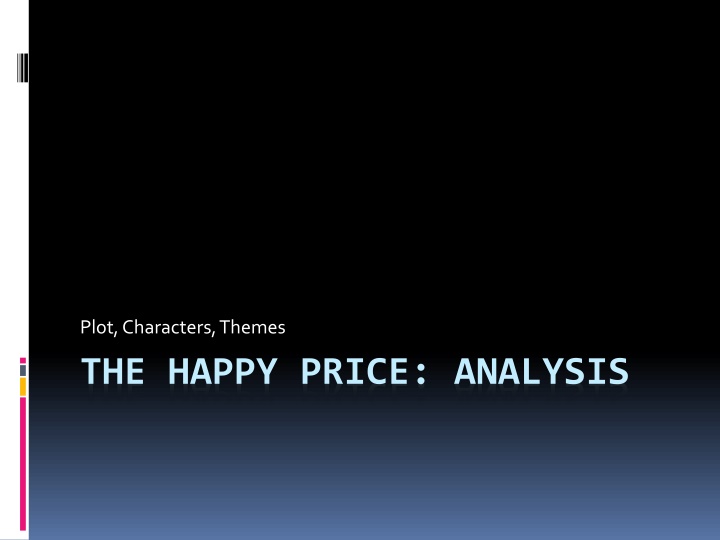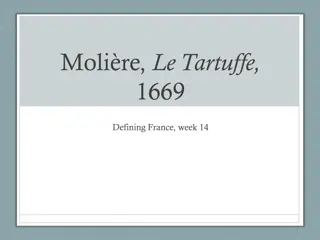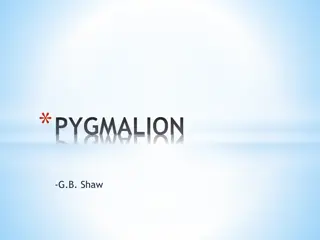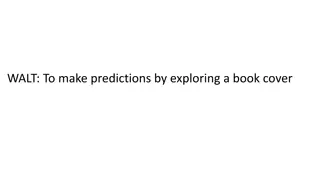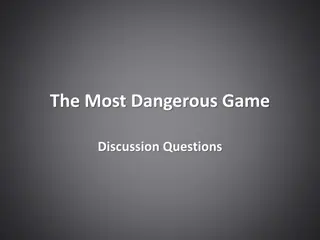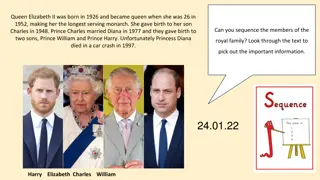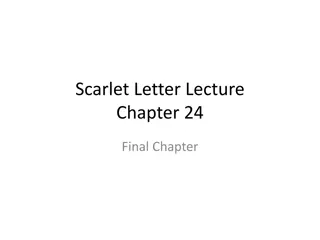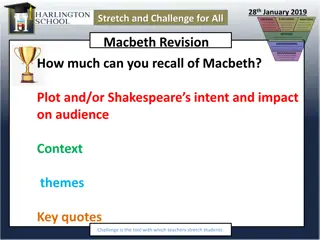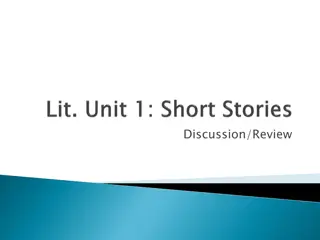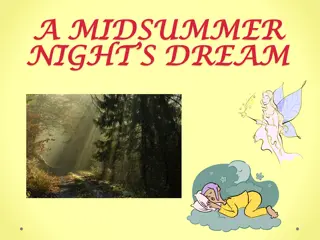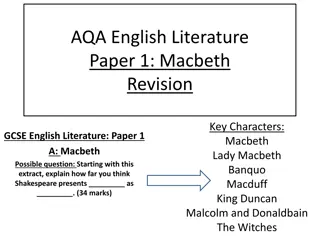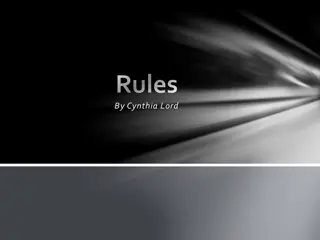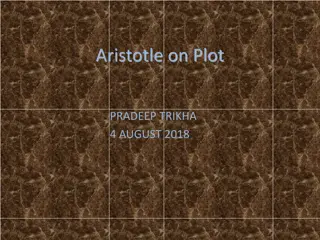Analysis of "The Happy Prince": Plot, Characters, Themes
The analysis of "The Happy Prince" explores the main character, the Happy Prince, and his transformation from external beauty to internal compassion. The story highlights themes of shallowness vs. altruism, idleness vs. sacrifice, and contempt vs. compassion through the interactions between the Happy Prince and the swallow. Ultimately, the tale serves as a moral and social allegory, reflecting on societal inequities and the importance of selflessness and empathy.
Download Presentation

Please find below an Image/Link to download the presentation.
The content on the website is provided AS IS for your information and personal use only. It may not be sold, licensed, or shared on other websites without obtaining consent from the author.If you encounter any issues during the download, it is possible that the publisher has removed the file from their server.
You are allowed to download the files provided on this website for personal or commercial use, subject to the condition that they are used lawfully. All files are the property of their respective owners.
The content on the website is provided AS IS for your information and personal use only. It may not be sold, licensed, or shared on other websites without obtaining consent from the author.
E N D
Presentation Transcript
Plot, Characters, Themes THE HAPPY PRICE: ANALYSIS
The Happy Prince: Character The Happy Prince is the main character who was on a high pole. He was so beautiful that he caused admiration with everyone. The children from the orphanage thought that he was an angel and everyone believed that someone so beautiful must be happy. One mother even told her son to be happy just like the beautiful Prince. The Prince only seemed happy. He was on a high pole and saw all of the misery and poverty of the city. He realized that people were suffering and that they need help. The true compassion of the Prince can be seen in the fact that he actually wanted to help the less fortunate people. His strongest virtue is the fact that he would sacrifice everything to help others. Two different processes started to happen: he became calm and happy inside while on the outside he was getting poorer. People only saw the surface which was gray and sad and nobody actually saw his real happiness. The strongest moment is the death of the swallow when Princes heart broke. It is the evidence that love can be so strong that even God himself saw it.
Characters: Cont. The swallow was an ordinary stubborn bird. He started to change thanks to the prince. At the beginning, he only listened to the prince because he was curious and afterward he stayed with him because he felt sorry for him. After every good deed, he felt better. From a superficial bird, he became the Princes partner in doing good to people. Even though he knew that he will die if he stayed in town he decided to stick with his friend. Love had the last saying in this matter. God rewarded both of them for their good work.
The Happy Prince: Commentary The story "The Happy Prince" is a moral and social allegory in that itplaces shallowness vs. altruism; idleness vs. sacrifice; and contempt vs. compassion under the perspective of the one person who once was adored by all and now has a statue made after him: The so-called Happy Prince. Once, when the Prince was alive, he was filled with richness and opulence to the point that, after his death, he was made into a statue of gold leaf and jewels. After the shallow swallow visits him and does the favor of givingone of the statue's rubies to a poor person, the Prince demonstrates that, as he gives more and more of his jewels and disrobes himself from the gold, he gains more for feeding the poor and clothing the needy thanks to the riches in his statue. Slowly, as the swallow continues to deliver the goods of the statue to the poor of the city, he learns the social imbalance that exists in society, where some have too much and others too little. In the case of Wilde's time, Victorian England was experiencing the same inequity in the slum districts and Oscar's story is a clear allegory and metaphor of the British Social System at the time: Where the rich were filthy rich and the poor starved to death. In the end, the swallow learns the lesson, the prince is completely run down from the jewels and gold that decorated him and, in accordance to the typical Victorian mentality, he was not worth attention anymore because, as the story says: "As he is no longer beautiful he is no longer useful, Hence, the shallowness of the people ended up with them trying to destroy the statue, the swallow dies next to it, and both go to Heaven where God deems them two beautiful creations just because of being who they are.
The Happy Prince: Analysis The happy prince is a tale with multiple lessons. From one side it is the critic of the society that can be cruel and heartless and on the other side, it is about the compassion towards humans troubles. The happy prince is a contemporary fairytale whose plot is surreal and it is placed into a modern society with real problems. Oscar Wild tried to state in a simple way the virtues and flaws of a person in all of his fairy tales and tried to criticize the society which is insensible. The main character knew only about nice things and after that, he decided to open his lead heart to everyone in need. When he helped them he didn t regret about the decorations taken down from him and he keeps on doing noble things with the help of a swallow. The swallow was the proof that everyone can do selfless things even though they would maybe be risking their lives. His love and devotion were rewarded with an eternal life. In the fairytale, we can see the prince and the swallow who try to help the ones in need and make them happy while on the other side we can see the powerful people in important positions who do not want to see what is going on in the world. They only see themselves and their goal in life. Oscar Wild set up a principle of selfishness and selflessness and he took the story to its top when God helped the main heroes of the story. The language in which the fairytale was written is simple even though every single word is wisely picked. Oscar Wild is the one leading the storytelling and introducing the readers into the plot. The whole fairytale is filled with hidden messages and because of that, The happy prince is a book you should read with a lot of attention.
